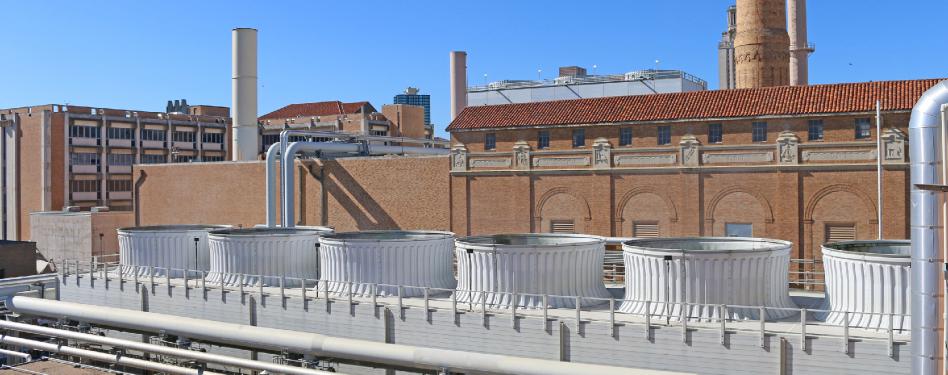
Over the years, GBCI has built a suite of green business programs dedicated to enhancing environmental performance and human health benefits. As companies continue to work to validate sustainability performance and communicate progress, more and more are finding value in pursuing multiple certifications.
Dell Seton Medical Center, a teaching hospital that’s part of Dell Medical School at The University of Texas at Austin, has adopted three of those programs: LEED, SITES and PEER. Here’s a look at some of the strategies the project team applied and how the center supports the university’s efforts to create a healthier, more sustainable built environment for students, patients and the larger community.
LEED
Dell Seton Medical Center emphasizes the link between learning, health and the built environment, which is embodied through the building’s LEED Gold certification. The hospital is a pedestrian and bike-friendly campus with numerous green features that promote efficiency and quality of life. The landscaping uses native and non-invasive adapted plants, reducing overall waste use by more than 50 percent. In addition, innovative vegetated bioswales control water quality, reflective roof surfaces help mitigate heat island effect, and water-efficient plumbing fixtures reduce domestic potable water use.

Outside of the medical center, the Dell Medical School campus also has three other learning buildings that are LEED Gold: The Health Learning Building, The Health Discovery Building and The Health Transformation Building.
SITES
Dell Seton Medical Center is part of the 16.2-acre Dell Medical District, a development located on the University of Texas campus. The project achieved SITES Gold and has become an urban oasis for students, educators, patients and the greater community.
Running directly through the medical center is Waller Creek, a previously neglected urban stream that played an integral role in influencing design efforts. Prior to construction, approximately 70 percent of the vegetative canopy along the creek comprised invasive species. The restoration process took 18 months and included the removal of those invasive species, stream bank stabilization and the re-vegetation of diverse native plant communities. The efforts helped reduce irrigation by over 75 percent.
Through careful design and planning, the Dell Medical District reused salvaged plants, leveraged recycled content for 28 percent of the materials cost and restored 3,318 cubic yards of soil. Stormwater management features were also designed as site amenities to provide visitors with a connection to the local climate and hydrology. Using a combination of rain gardens, pervious pavers, rainwater harvesting, and a green roof, the project manages the 80th percentile rainfall event, or approximately 46,939 cubic feet of water.
PEER
In 2014, The University of Texas at Austin became the first PEER-certified campus in the world. Dell Seton Medical Center is serviced by the university’s PEER-certified grid, which is allowing the university to increase energy efficiency.
The university’s grid is able to independently ensure reliable power to its buildings with an exceptional degree of self-sufficiency and control. Islanding capabilities can keep the campus’s lights on if the surrounding area were to experience a widespread outage. The excess generation capacity and rapid load shedding capability ensures chilled water and steam to the university’s critical facilities, like Dell Seton Medical Center, if one of the primary generators were to go offline.
The university also underwent an analysis of the value achieved by their microgrid as part of their PEER certification, and set a benchmark for other campus facilities by saving millions of dollars each year.
Learn more about these certifications and other GBCI programs
